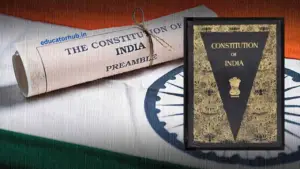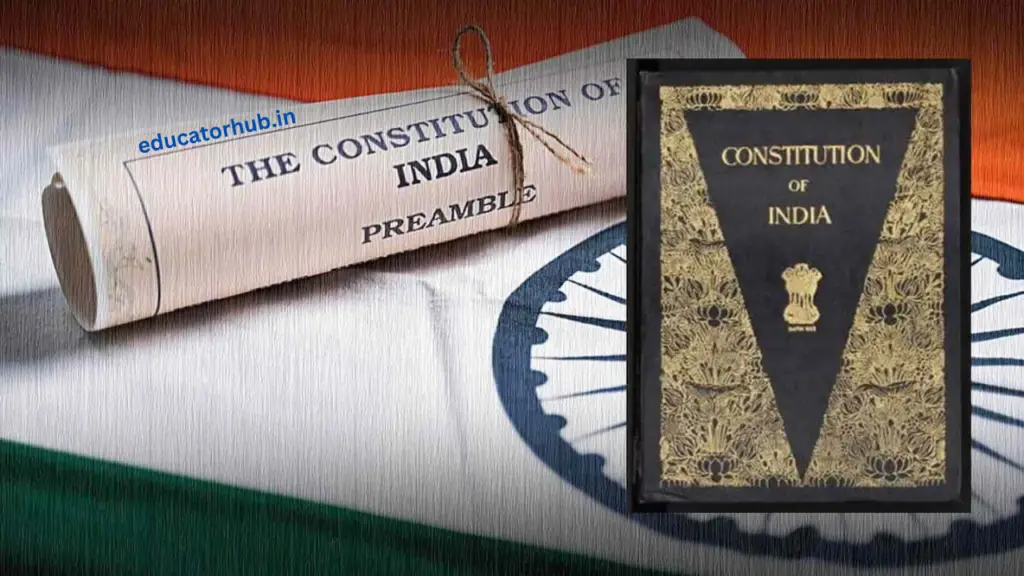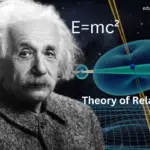
The Constitution of the India came into effect on January 26, 1950, and features a holistic and unique approach. The Constitution was created by the constituent assembly over about three years. It envisaged the fabric of the social, cultural, political, and national, highlighting the significance of the Indian society. Now, let us look abot Sailent Feature of the Constitution of India, which has earned tremendous respect :
Detailed and lengthy documentation
The Constitution of India is known to be longer in the world. It has a total of 395 articles grouped into 22 parts (now termed differently), 12 schedules, and several amendments. This kind of length denotes the pluralism of India. It targets different regions, languages, cultures, and laws that are relevant to specific communities. The Constitution contains provisions, concerning the basic rights and duties. It also contains provisions for citizenship, the courts, the executives, interstate relations, and emergency provisions. So the Constitution is rather extensive.
We, the people of India… give to ourselves this Constitution: A Sovereign, Socialist, Secular, and Democratic Republic.
The introductory clauses include the proclamation of India as a sovereign. Socialist, secular, and Democratic Republic slogans follow:
- Sovereign, in other respects, means that India is a nation in its own right today and answers to no one externally.
- Socialist means the aim of achieving social and economic equity through policies that ensure a fair distribution of wealth.
- Secular means that the state is neutral in terms of religion. All its citizens can freely practice or propagate any religion.
- ‘Democratic Republic’ simply means that India is beset with a representative head who has been elected by the people and is presided over by a president.
Also Read : How to Make Money Online
Read further about Sailent Feature of the Constitution of India…
Federal System with a Unitary Bias
India is said to have a federal polity with national and regional governments. It is sufficiently modified to possess a unitary bias. This means that in exceptional situations, such as a declaration of emergency, the central government may exercise all governing powers to enforce cohesion and wholeness amongst the states. Further, the Constitution recognizes three distinct lists, which are the Union List, State List, and Concurrent List, to specify the areas of legislative authority.
Parliamentary System of Government
We can observe British influence in India’s system of parliamentary democracy, adopted by India. The head of state is the President of India, who, however, occupies a position of ceremonial importance. The real power of governance is in the hands of the Prime Minister and his or her Council of Ministers, who are responsible to Parliament. The structure democratically progresses control along with consistency and a split of power, while also enabling an integrated system between the legislature and the executive.
Fundamental Rights and Duties
The Fundamental Rights of the Constitution comprise six categories as encapsulated by the provisions within that document.
- Right to Equality (Articles 14-18) : The Right to Equal Treatment
- Right to Freedom (Articles 19-22) : The Right to Free Movement
- Right against Exploitation (Articles 23-24) : The right against exploitation of any type includes all articles to their extent.
- Right to Freedom of Religion (Articles 25-28)
- Educational, cultural, and language rights (Articles 29-30)
- Right to Constitutional Remedies (Article 32)
Thus, these are the rights established in several articles, which in one way or another seek to promote individual personal liberties within the state, guarantee fundamental equality, and ensure that social justice is preserved and maintained. The constitution’s 42nd Amendment introduced all these fundamental rights. It includes some ‘fundamental duties’ in Article 51A to foster citizenship concern for the wellbeing of society.
Also Read : Unlock the Noun Mastery- Explore Hidden Types and Examples
Read further about Sailent Feature of the Constitution of India…
Directive Principles of State Policy (DPSP)
Articles 36-51 contains these directives for the government, inspired by the Irish Constitution. Lead the way in making sure that there is improvement in the standard of living of the population through sound economic and social principles. Although, courts do not enforced them, DPSP focuses on providing people with fair employment, education, and a cleaner set of targets for a welfare society.
Independent Judiciary
Involvement of India’s executive and legislature in the judiciary branch is absent, and this is one of the important aspects that helps to uphold the principle of law and administer justice. There is an element of self-examination by the judicial branch as well, but in this case, it is the Supreme Court that has the power to review any act of parliament or state legislatures themselves and nullify them if they contravene the constitution of the land. Such a process ensures to keep checking to voters and their fundamental rights become safe.
Suffrage for All Adults Above Eighteen
The Indian Constitution ensures universal franchise for all citizens, irrespective of any discrimination against those who are at least eighteen years old. The universal adult suffrage principle supports the democratic value of equality and gives the right to all eligible citizens to participate in the election of their leaders.
Citizenship
Contrary to other federal countries, India follows the single citizenship model. Indians, irrespective of state or union territory, have the same set of citizenship rights and privileges. This enhances the spirit of national integrity and minimises the likelihood of interstate discriminatory endeavours.
Provisions during Emergency
Under the three provisions described, the President has very wide-ranging emergency powers in the Constitution:
- National emergency under Article 352 due to external aggression or armed rebellion.
- State Emergency, otherwise known as the President’s Rule under Article 356, in situations when the constitutional machinery in a state is not functioning.
- Financial emergency as described in Article 360, where the financial security of India is in jeopardy.
These provisions, though rarely used. These are useful in protecting the integrity of the nation, order, and security in times of turmoil.
Basic Rights Not Beyond Parliament’s Amendments
Even as the Parliament possesses the capacity to amend fundamental rights. The Supreme Court of India ruled that such rights are subject to judicial or legal review. That such amendments should not change what the bench termed the ‘basic structure’ of the constitution. This principle developed through standard cases. Its intention is to ensure that there is no alternation in certain features or pillars of democracy, secularism, and federalism by amendments.
Article 370: Special Provisions for Certain States
The Constitution also includes provisions for the states, including Jammu and Kashmir. It has been provided for under 370 until recent abrogation in 2019, and for those in the north-eastern parts of the country due to the fact that these places have a special and unique history and culture. These provisions aim to help assimilate these regions while preserving their distinct characters.
Cooperative Federalism Engagement Principles
The Indian Constitution has a provision for cooperative federalism. It aims to maintain the relationship between the central government and states. This principle is critical in the formulation of policies that pay attention to issues of national scope and relevance. Institutions like the Inter-State Council, Finance Commission, and Planning Commission (now Niti Ayog) promote the interrelationship and collaboration of the national and regional governments in the country.
Special Provisions for Minority Rights
The Constitution accommodates such groups by guaranteeing cultural and educational rights to religious minorities and linguistic minorities. Articles 29 and 30 give them the power to protect their heritage, develop their language, and set up educational institutions to teach them the language, all of which make India a truly multicultural society.
Conclusion
The Constitution of India is firm yet adaptable. It made up of characteristics of various successful constitutions of the world. It has local inputs for the benefit of the people of India. These foundational ensure provisions for the establishment of a just, fair, and firm governance system. They also protect basic rights to all, integrity in diversity, and balanced growth, making it one of the most cherished constitutions in the world.
Thanks for visit and read the article ‘Sailent Feature of the Constitution of India‘…
Also Read :
- Right and Duties of Citizens
- Who is Lawrence Bishnoi Complete Information in Brief
- Meaning of Leisure : Full Details
- Articles a an the in english : Read full detail
- Best Science Essay In English for Students : 2000+ words
- Best Essay on Vehicular Pollution for Students : 300+ words
To Wikipedia: Click Here



